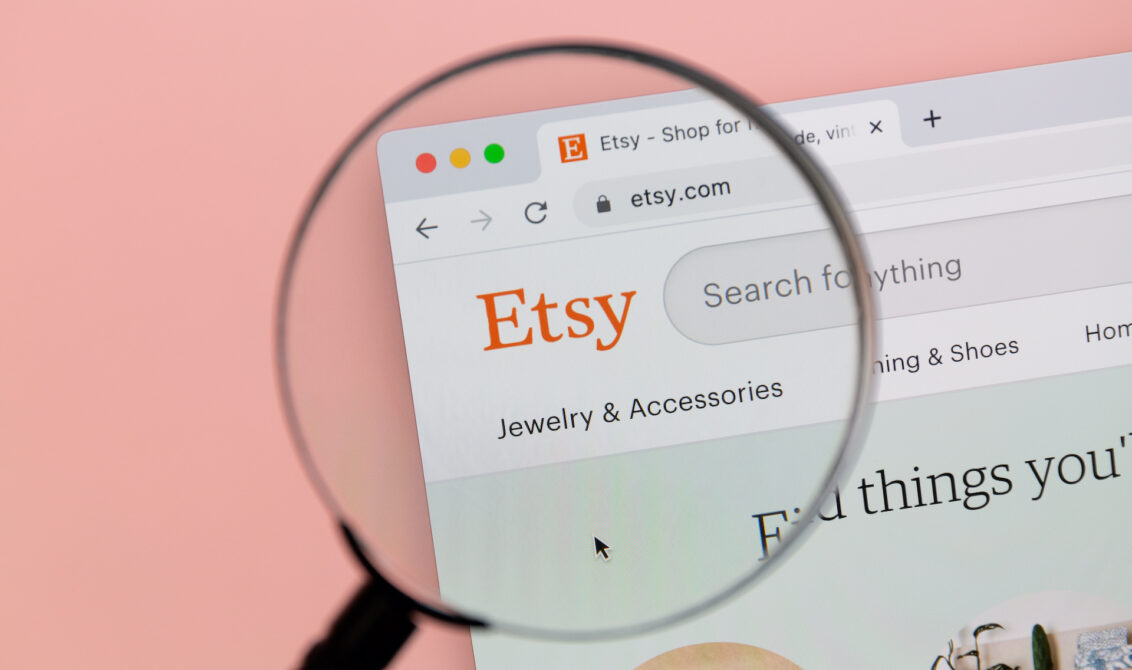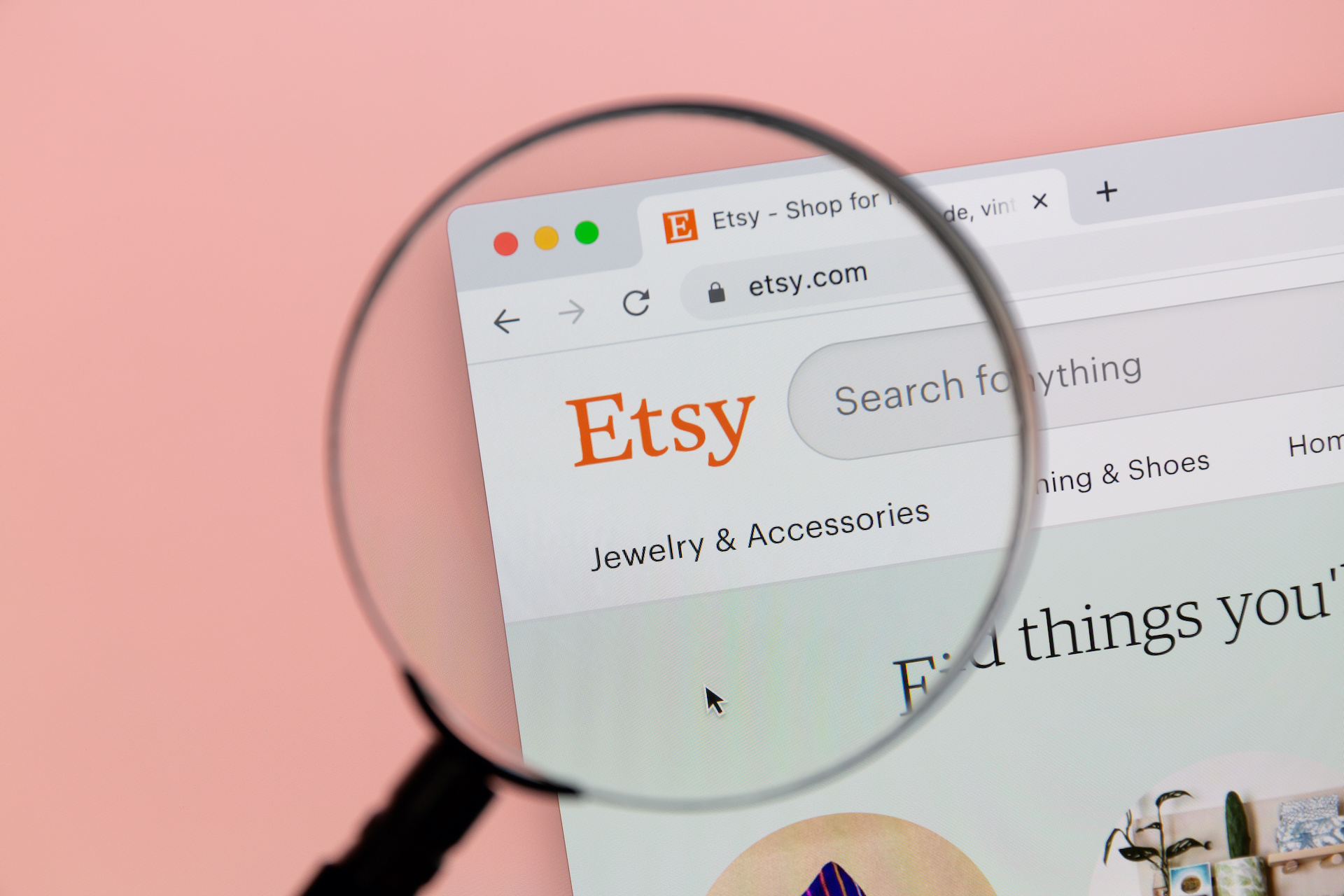Following a record-breaking fourth quarter of 2021, Etsy announced an increase in seller transaction fees from 5 percent to 6.5 percent. In the company’s investor report, Etsy said the 30 percent increase will take effect starting on April 11th. The transaction fee is the percentage of the total order amount Etsy charges when a seller makes a sale.
Etsy (NASDAQ: ETSY) shares soared 24% after-hours following the company’s strong Q4 results, with EPS coming in at $1.11, beating the consensus estimate of $0.78. Revenue grew 16.2% year-over-year to $717.1 million, above the consensus estimate of $684.66 million.
The company provided its Q1 22 outlook, expecting GMS (value of sales on its marketplace) in the range of $3.2-$3.4 billion, revenue in the range of $565-$590 million, with an adjusted EBITDA margin of around 26%.
In an email to its seller community on Thursday, CEO John Silverman said: “We’re planning to invest even more in making Etsy the best place to run a creative business – in fact, we expect to invest most of the incremental revenue from this fee increase in marketing, seller tools, and creating world-class customer experiences.”
The announcement quickly drew heavy criticism online.
“Wow Etsy. So thanks to the hard work of small businesses busting their ass, you’re going to increase your transaction fees to 6.5%? So now we have to raise our already tight margins and prices to absorb this ridiculousness,” says Philadelphia-based independent artist and Etsy shop owner, Stephanie Thomas, who sells handmade greeting cards, and art prints.
Brittany Zerkle, the owner of Grand Rapids-based BeeZeeArt, a plush toy maker, echoed similar concerns: “Cool. More price increases in exchange for a vague promise to advertise more and hire more support staff. Meanwhile, Etsy still lacks the most basic features like supporting digital downloads on their app or allowing sellers to block abusive buyers from contacting or purchasing.”

While Etsy promises to invest in marketing to attract more buyers, grow their support team, and ramp up technology, some sellers are not sold on the promises that prompted the increased take rate.
Karine, an artist, and owner of Kness – a ceramic animal and porcelain jewelry company based in Montréal, Québec, started her business by selling on Etsy. A few years later, she’s had a change of heart about the marketplace.
“In the beginning, Etsy promoted small businesses, artists, and makers. But today, they are just letting their clients pull the bulk of the weight and they make a profit off of us,” she wrote in a blog post in early 2020. Today her concerns were not allayed, “And here I’m a bit cynical but I’ve honestly never seen Etsy make a good move so …” she added.
Rethinking the role of digital marketplaces
When Etsy first started many of its sellers were already selling on Amazon or eBay. By setting low fees in comparison to competitors, Etsy positioned itself as an attractive option for sellers. That pricing strategy helped the marketplace carve out market share from big competitors—especially in the early days.
Historically, Etsy’s fees have been quite low, however, the publicly-traded company continues to face pressure as shareholders demand higher profits, which has created pressure to increase commission rates.

Transaction fees are the lifeblood of today’s marketplaces. However, they would not exist if the buyer and seller met independently. Given Etsy’s recent announcement, some sellers are rethinking the role of marketplaces like Etsy, Wish, eBay, and Amazon as a primary channel for distribution and acquiring new customers.
When small business owners leverage marketplaces as a sales channel, selling success and profitability requires smart decisions about strategic fit and operational requirements.
Participating in marketplaces, like any other sales channel, requires small business owners to consider profitability trade-offs. Sellers should conduct “cost-benefit analyses of the addressable market size and of new consumers to whom a partner marketplace would provide access, on the one hand, and the potential cannibalization of owned-site sales and increased margin pressure resulting from the partnership, on the other,” according to McKinsey & Co.
Ultimately, to remain competitive, sellers need to meet buyers where and how they shop. A renewed effort to develop sustainable marketplace strategies as part of a broader channel strategy will be a key initiative for many sellers in the year ahead.
Relying on a single sales channel, like Etsy, is a fatal mistake. Their announcement of plans to take a bigger piece of the pie outweighs the tangible benefits for some sellers, making the partnership less ideal in the long term.
As a result, sellers may pivot from a channel sales model to a direct sales model – or look for a more “ideal partner” altogether. “I have my own webpage but obviously platforms help with getting views and sales. Just wish they didn’t choose greed over their sellers,” said artist Ashley Wendt of Wonder Wendt.
New York-based Etsy seller Sarah McGonagall’s response to the news: “I’m just going to be moving over to my own domain soon.”
© YFS Magazine. All Rights Reserved. Copying prohibited. All material is protected by U.S. and international copyright laws. Unauthorized reproduction or distribution of this material is prohibited. Sharing of this material under Attribution-NonCommercial-NoDerivatives 4.0 International terms, listed here, is permitted.






